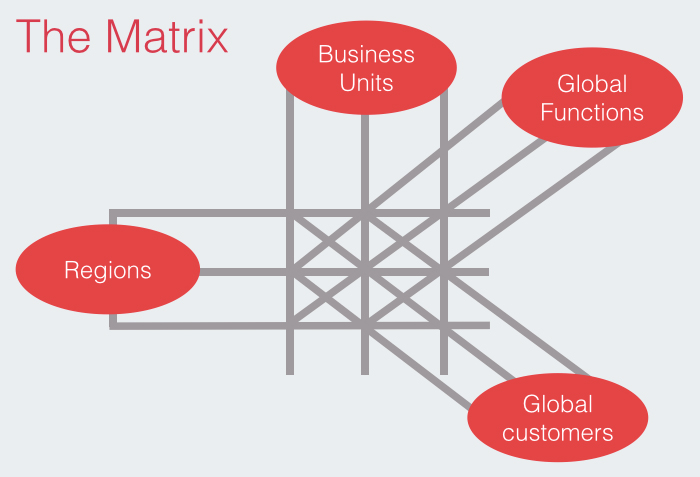In New York last week, about 25 Managers from 7 different countries and a team of IESE professors met in New York for our program on Global Leadership and Managing the Matrix.
This is the third year we have ran the program and every year I gain new insights from our participants and my colleagues.
In this edition, what came across is the enormous amount of time and energy needed to make a truly global matrix work and also that faced with the increasing amount of global complexity many businesses face, it may be the only way to achieve the goal of operating both globally and locally at the same time.
Global Complexity
According to my colleague Pedro Videla, the world economy is getting larger and is becoming increasingly interdependent as time goes by.
 Hundreds of millions of people in Asia, Latin America, and Africa are climbing out of poverty, living longer, and beginning to enjoy material wealth on an unprecedented scale. If this continues, and although there may be bumps along the way as discussed in this blog last week, we might be starting to see what Peter Schwartz called, The Long Boom in several of his books and an article in Wired.
Hundreds of millions of people in Asia, Latin America, and Africa are climbing out of poverty, living longer, and beginning to enjoy material wealth on an unprecedented scale. If this continues, and although there may be bumps along the way as discussed in this blog last week, we might be starting to see what Peter Schwartz called, The Long Boom in several of his books and an article in Wired.
What makes things complex are the important differences between different regions, countries, and markets as well as their similarities. Sometimes it is difficult to know which are which.
The approach of many companies which are operating in different parts of the world and in different business units has been to go back to Jay Galbraith’s idea of the matrix organization which had been largely abandoned in the 1980s as too complex, slow, and expensive.
The issue facing many of the participants in the course, is how to be effective in this environment in which many relationships cross organizational lines of authority as well as time and space.
Speakers & Case Studies
In the course we heard from Nick Shreiber, former CEO of Tetra Pak and Bernard Kreillman, President of Ferrero USA and also looked at a number of case studies including A.G. Laffley’s remarkable turnaround of P&G in 2000.
What seemed to impress the participants the most was the incredible humility shown by these people and the time and energy they spent on building consensus and developing the culture of their organizations.
Harder than it looks!
Galbraith looks at an organization’s strategy, structure, processes, people, and reward systems and argues that if all of these are aligned with the collaborative idea that is at the heart of a matrix organization, everything will work well.
One problem is that strategy is constantly evolving to keep up with the changing times we are living in and it is difficult to achieve this alignment.
Another is that organizations, according to Galbraith, will mirror the behavior and demonstrated values of the leadership team and building such a team, which operates under the principles of mutual trust, shared objectives, and honest and continuous communications is not easy and takes time.


